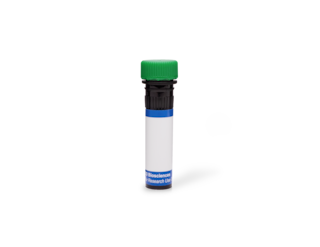-
Reagents
- Flow Cytometry Reagents
-
Western Blotting and Molecular Reagents
- Immunoassay Reagents
-
Single-Cell Multiomics Reagents
- BD® OMICS-Guard Sample Preservation Buffer
- BD® AbSeq Assay
- BD® Single-Cell Multiplexing Kit
- BD Rhapsody™ ATAC-Seq Assays
- BD Rhapsody™ Whole Transcriptome Analysis (WTA) Amplification Kit
- BD Rhapsody™ TCR/BCR Next Multiomic Assays
- BD Rhapsody™ Targeted mRNA Kits
- BD Rhapsody™ Accessory Kits
- BD® OMICS-One Protein Panels
- BD OMICS-One™ WTA Next Assay
-
Functional Assays
-
Microscopy and Imaging Reagents
-
Cell Preparation and Separation Reagents
Old Browser
This page has been recently translated and is available in French now.
Looks like you're visiting us from {countryName}.
Would you like to stay on the current location site or be switched to your location?
BD Transduction Laboratories™ Purified Mouse Anti-PKCα
Clone 3/PKCα (RUO)





Western blot analysis of PKCα on a rat cerebrum lysate. Lane 1: 1:1000, lane 2: 1:2000, lane 3: 1:4000 dilution of the mouse anti-PKCα antibody.

Immunofluorescence staining of PC12 cells (Rat neuroblastoma; ATCC CRL-1721).




Regulatory Status Legend
Any use of products other than the permitted use without the express written authorization of Becton, Dickinson and Company is strictly prohibited.
Preparation And Storage
Recommended Assay Procedures
Western blot: Please refer to http://www.bdbiosciences.com/pharmingen/protocols/Western_Blotting.shtml
Product Notices
- Since applications vary, each investigator should titrate the reagent to obtain optimal results.
- Please refer to www.bdbiosciences.com/us/s/resources for technical protocols.
- Caution: Sodium azide yields highly toxic hydrazoic acid under acidic conditions. Dilute azide compounds in running water before discarding to avoid accumulation of potentially explosive deposits in plumbing.
- Source of all serum proteins is from USDA inspected abattoirs located in the United States.
Companion Products


The Protein Kinase C (PKC) family of homologous serine/threonine protein kinases is involved in a number of processes, such as growth, differentiation, and cytokine secretion. At least eleven isozymes have been described. These proteins are products of multiple genes and alternative splicing. Conventional PKC (cPKC) subfamily members (α, β, and γ isoforms) consists of a single polypeptide chain containing four conserved regions (C) and five variable regions (V). The N-terminal half containing C1, C2, V1, and V2 constitutes the regulatory domain and interacts with the PKC activators Ca2+, phospholipid, diacylglycerol, or phorbol ester. However, the the C2-like domains of novel PKC (nPKC) subfamily members (δ, ε, η, and θ isoforms) are Ca2+-independent. The atypical PKC (aPKC) subfamily members (ζ, ι, and λ isoforms) lack the C2 domain and are unique in that their activity is independent of diacylglycerols and phorbol esters. They also lack one repeat of the cysteine-rich sequences that are conserved in cPKC and nPKC members. The C-terminal region of PKC contains the catalytic domain. The PKC pathway represents a major signal transduction system that is activated following ligand-stimulation of transmembrane receptors by hormones, neurotransmitters, and growth factors. PKCα regulates a wide variety of functions such as cellular growth, apoptosis, cardiomyocyte function, and brain cognitive functions.
The 3/PKCα monoclonal antibody recognizes PKCα, regardless of phosphorylation status, and has been reported to crossreact with PKCβ.
This antibody is routinely tested by western blot analysis. Other applications were tested at BD Biosciences Pharmingen during antibody development only or reported in the literature.
Development References (5)
-
Nishizuka Y. The molecular heterogeneity of protein kinase C and its implications for cellular regulation. Nature. 1988; 334(6184):661-665. (Biology). View Reference
-
Powner DJ, Hodgkin MN, Wakelam MJ. Antigen-stimulated activation of phospholipase D1b by Rac1, ARF6, and PKCalpha in RBL-2H3 cells. Mol Biol Cell. 2002; 13(4):1252-1262. (Biology: Immunofluorescence, Western blot). View Reference
-
Smart EJ, Ying YS, Anderson RG. Hormonal regulation of caveolae internalization. J Cell Biol. 1995; 131(4):929-938. (Biology: Immunohistochemistry). View Reference
-
Wagner LM, Fowler VM, Takemoto DJ. The interaction and phosphorylation of tropomodulin by protein kinase Calpha in N/N 1003A lens epithelial cells. Mol Vis. 2002; 8:394-406. (Biology: Immunoprecipitation, Western blot). View Reference
-
Zhang XA, Bontrager AL, Hemler ME.. Transmembrane-4 superfamily proteins associate with activated protein kinase C (PKC) and link PKC to specific beta(1) integrins. J Biol Chem. 2001; 276(27):25005-25013. (Biology: Immunofluorescence, Immunoprecipitation, Western blot). View Reference
Please refer to Support Documents for Quality Certificates
Global - Refer to manufacturer's instructions for use and related User Manuals and Technical data sheets before using this products as described
Comparisons, where applicable, are made against older BD Technology, manual methods or are general performance claims. Comparisons are not made against non-BD technologies, unless otherwise noted.
For Research Use Only. Not for use in diagnostic or therapeutic procedures.